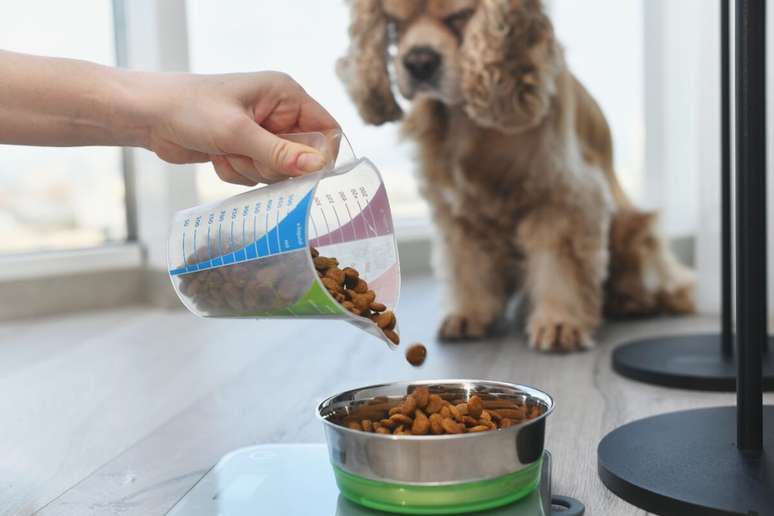Changes to animal nutrition must be made with caution to ensure health and well-being.
Changing your dog or cat’s diet may be necessary in different situations, such as life stage transition, health problems, veterinary recommendations, price or simply to improve nutritional quality. However, this change must be made carefully since, if sudden or inappropriate, it can cause diarrhea, vomiting, loss of appetite and other more serious conditions.
Below, check out some care tips when changing your dog or cat’s food!
1. Consult a veterinarian first to change your diet
Before making any changes to your pet’s diet, it is important to consult a veterinarian. This is because the professional can evaluate whether the new food is suitable for the nutritional needs of the dog or cat, taking into account factors such as age, competitionweight and possible health conditions. This helps avoid long-term problems.
“We must always trust a veterinarian to provide us with this information, because not only the breed, but also the activity level, space, climate, nutrition level, health and many other factors influence the choice of the best food,” explains veterinarian Julio Miguel Fernandes.
2. Make the transition gradually
Changing the diet must be done gradually so that the animal’s body can adapt. Ideally, the change should be made over 7-10 days, mixing the old food with the new in increasing proportions. Generally the quantities are indicated on the packaging of the new food. This helps prevent digestive disorders such as gas and diarrhea.
3. Observe any allergies or intolerances
During the food switching process it is important to pay attention to signs of food allergies or intolerances. “I always recommend feeding a small portion and watching for any adverse reactions such as allergies, possible vomiting or diarrhea. Since the animal has not undergone any changes, it must be used according to the manufacturer’s recommendations,” says veterinarian Dr. Luiz Fernando Ferreira . If you notice any of these signs, discontinue the new food immediately and consult your veterinarian for a more detailed evaluation.
4. Keep the pet hydrated
When changing the feed, especially if it comes from a wet food for a dry one, it is essential to make sure your pet is well hydrated. The new diet may require greater water consumption to avoid urinary and digestive problems, especially in cats, which naturally tend to drink less water.
“Cats are not very used to drinking water. In nature they prefer to obtain it from their prey. For this reason they favor the consumption of game intestines, which are made up of 80% liquids”, explains veterinarian Roberto Tortelly Neto, co-owner of the TOUCH Pet Escola, a school that offers professional qualification courses in the area pet.

5. Avoid mixing foods of different brands
Mixing different brands of food to create a mix may not be a good idea, as each has its own balanced composition of nutrients. Doing so can unbalance your pet’s diet and cause health problems, such as too much of some nutrients or too little of others.
6. Follow the recommended portions indicated
Everything is fine portion has its own daily administration recommendation, based on the weight, age and activity level of the animal. When changing, follow the manufacturer’s instructions and adjust the quantity according to what is indicated on the package or recommended by your veterinarian. Too much feed can lead to obesity, while too little can cause a nutritional deficiency.
“The ideal is to always divide the daily ration into at least three meals; in the case of puppies, up to five. But, if our schedules are not compatible with this, we can obviously divide it into two meals – always respecting the quantities recommended by the manufacturer and never let him feel comfortable,” teaches Julio Miguel Fernandes.
7. Monitor your weight and body condition
During the feeding transition, monitor the weight and physical condition of the animal. The new diet should keep you at the appropriate weight, without excessive gain or loss. If you notice any changes, adjust portions and consult your veterinarian to ensure the food is the most appropriate.
8. Respect your child’s food preferences pet
Some pets may be pickier and take longer to accept new food. Respecting the adaptation time is important to prevent him from rejecting food or developing an aversion. If change is necessary, be patient and make the change smoothly, without forcing.
“If the food chosen by the owner is not ideal for him, there are other suggestions on the market for different activity levels, specific to breed and also for neutered animals“, explains Thaís Matos, veterinarian at DogHero.
Source: Terra
Ben Stock is a lifestyle journalist and author at Gossipify. He writes about topics such as health, wellness, travel, food and home decor. He provides practical advice and inspiration to improve well-being, keeps readers up to date with latest lifestyle news and trends, known for his engaging writing style, in-depth analysis and unique perspectives.








